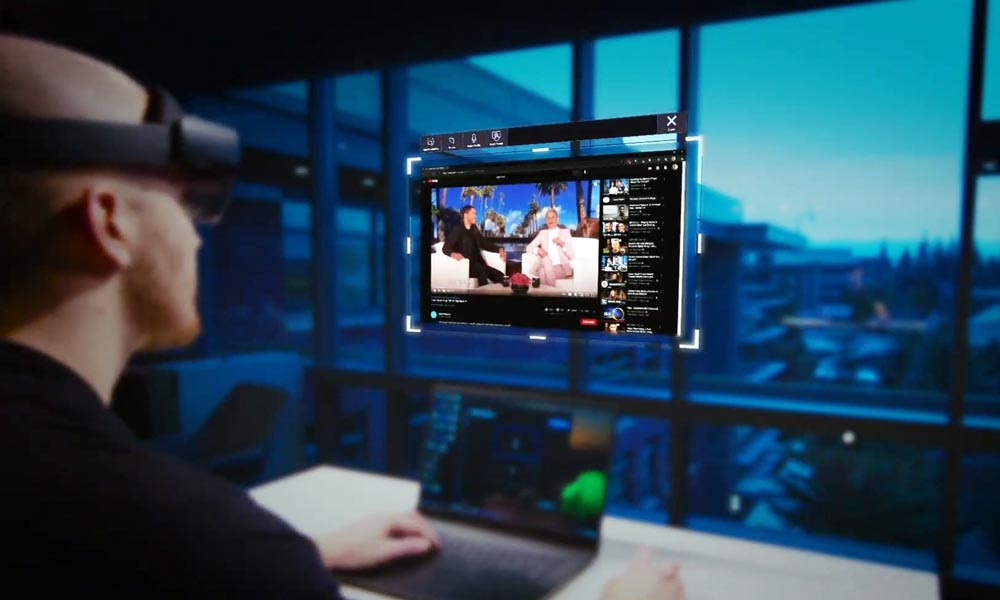


There will also be competition from Microsoft Corp., Alphabet Inc., Snap and Sony Group Corp. One hurdle to Apple’s headset domination is price: Its headset could cost as much as $2,000 (a Quest 2 is available at $299 and $399).ĪLSO READ: Apple had to make tough choices about final design of AR/VR headset: Report There’s a reason why Apple isn’t messing around with its headset: Consumer devices account for 80% of the company’s revenue, and it’s looking for the next hit (in comparison, almost all of Meta’s sales are ad-based). Apple Maps: This feature provides AR navigating on the iPhone (and will obviously be useful in a headset.Live text in photos: An important way to overlay information onto the real world.FaceTime SharePlay: This feature allows you to listen to music or watch movies with a friend (it will “have a big role to play in mixed reality as we consume content while simultaneously interacting with friends and family”).Memojis: Animated digital representations (typically headshots) of an individual.In another piece, Cybart highlights that Apple has been rolling out features on the iPhone that can be used in a mixed-reality world:
Virtual reality mac hardware software#
Per Gurman, Apple has 2,000 employees in its Technology Development Group working on both a mixed-reality (AR/VR) headset and a standalone AR headset (unlike full-immersion VR, AR overlays “digital information and images on top of the real world”).ĪLSO READ: Apple looks to boost output outside China amid strict anti-Covid policyĪpple has also made a number of AR-related acquisitions in recent years: AR software firm Metaio (2015), computer vision firm SensoMotoric Instruments (2017), hand-tracking tech startup Vrvana (2017), AR glass tech startup Akonia Holographics (2018) and two AR content startups NextVR and Spaces (2020). Unlike Meta, Apple has been mum about its actual mixed-reality investment, but we can assume its sizable. The experience of building and shipping all this wearable hardware directly applies to headsets. We can expect pretty seamless integration with the headset. Apple already has solutions in place for audio (AirPods) and hand gesture (AssistiveTouch via the Apple Watch) requirements. Former Apple exec Jony Ive has all but perfected this approach (per The Information, Ive has consulted on Apple’s headset, including key details like “battery, camera placement and ergonomics”).Ī ready ecosystem: A successful mixed-reality headset won’t be a standalone product, especially if it’s meant to interact with the real world. When it comes to wearables, combining function and fashion is vital.

Virtual reality mac hardware series#
Since then, the company has rolled out custom-built chips - often higher performing than alternatives - for its devices: A Series (iPad, iPhone), M Series (Mac), S Series (Watch), W Series (AirPods).ĭesign-led product developments: Apple has long been a design-first firm tightly integrating design with engineering. In an article from last May, Cybart makes the strong case that Apple has built a “decades-long lead in wearables” by piecing together several advantages:Ĭustom silicon chips: Apple acquired semiconductor firm PA Semi in 2008 for $278 million. No other company can move high-end consumer hardware at Apple’s scale. Also, don’t forget the 233 million iPhones it shipped last year. According to Apple analyst Neil Cybart, the iPhone maker shipped more than 100 million wearables (Apple Watch, AirPods and Beats headphones) in 2021, an increase of 4x from 2017. The Quest 2 sales figure is a drop in the wearables hardware bucket compared with what Apple has been able to move, though. CEO Mark Zuckerberg renamed the company and committed to spending $10 billion a year to bring to life his vision of a VR-enabled metaverse.Īnd there’s been serious progress: Sales of Meta’s Quest 2 hit 8.7 million units in 2021, twice as much as in the prior year, and the company owns 80% of the market. (aka the artist formerly known as Facebook). The leading competitor in the space is Meta Platforms Inc. Last week, Bloomberg’s Mark Gurman reported that Apple demonstrated an AR/VR (augmented and virtual reality) device to its board of directors and has a “consumer release planned for 2023.” Whenever the headset does come out, Apple is well-placed to win the mixed-reality battle. mixed-reality headset have swirled for years.


 0 kommentar(er)
0 kommentar(er)
